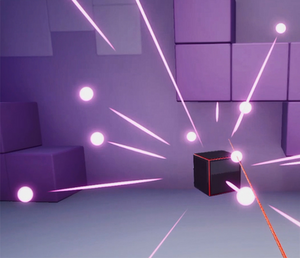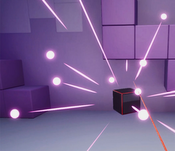Information
- Publication Type: Conference Paper
- Workgroup(s)/Project(s): not specified
- Date: 2021
- Publisher: IEEE Computer Society
- Event: IEEE VR 2021
- DOI: 10.1109/VR50410.2021.00084
- Booktitle: IEEE Virtual Reality and 3D User Interfaces (VR)
- Pages: 9
- Pages: 588 – 596
- Keywords: Virtual Reality, Information Presentation, Visualization Techniques, Spatial Object Localization, Deaf and Hard-of- Hearing
Abstract
Information visualization techniques play an important role in Virtual Reality (VR) because they improve task performance, support cognitive processes, and eventually increase the feeling of immersion. Deaf and Hard-of-Hearing (DHH) persons have special needs for information presentation because they feel and perceive VR environments differently. Therefore, it is necessary to pay attention to requirements about presenting information in VR for this group of users. Previous research showed that adding special features and using haptic methods helps DHH persons to do VR tasks better. In this paper, we propose a novel Omni-directional particle visualization method and also evaluate multi-modal presentation methods in VR for DHH persons, such as audio, visual, haptic, and a combination of them (AVH). Additionally, we compare the results with the results of persons without hearing problems. The methods for information presentation in our study focus on spatial object localization in VR. Our user studies show that both DHH persons and persons without hearing problems were able to do VR tasks significantly faster using AVH. Also, we found out that DHH persons can do visual-related VR tasks faster than persons without hearing problems by using our new proposed visualization method. Our results suggest that the benefits of using audio among persons without hearing problems and the benefits of using vision among DHH persons cause an interesting balance in the results of AVH between both groups. Finally, our qualitative and quantitative evaluation indicates that both groups of participants preferred and enjoyed AVH modality more than other modalities.Additional Files and Images
Weblinks
- Entry in reposiTUm (TU Wien Publication Database)
- Entry in the publication database of TU-Wien
- DOI: 10.1109/VR50410.2021.00084
BibTeX
@inproceedings{Mirzaei_Mohammad-2021,
title = "Multi-modal Spatial Object Localization in Virtual Reality
for Deaf and Hard-of-Hearing People",
author = "Mohammadreza Mirzaei and Peter K\'{a}n and Hannes Kaufmann",
year = "2021",
abstract = "Information visualization techniques play an important role
in Virtual Reality (VR) because they improve task
performance, support cognitive processes, and eventually
increase the feeling of immersion. Deaf and Hard-of-Hearing
(DHH) persons have special needs for information
presentation because they feel and perceive VR environments
differently. Therefore, it is necessary to pay attention to
requirements about presenting information in VR for this
group of users. Previous research showed that adding special
features and using haptic methods helps DHH persons to do VR
tasks better. In this paper, we propose a novel
Omni-directional particle visualization method and also
evaluate multi-modal presentation methods in VR for DHH
persons, such as audio, visual, haptic, and a combination of
them (AVH). Additionally, we compare the results with the
results of persons without hearing problems. The methods for
information presentation in our study focus on spatial
object localization in VR. Our user studies show that both
DHH persons and persons without hearing problems were able
to do VR tasks significantly faster using AVH. Also, we
found out that DHH persons can do visual-related VR tasks
faster than persons without hearing problems by using our
new proposed visualization method. Our results suggest that
the benefits of using audio among persons without hearing
problems and the benefits of using vision among DHH persons
cause an interesting balance in the results of AVH between
both groups. Finally, our qualitative and quantitative
evaluation indicates that both groups of participants
preferred and enjoyed AVH modality more than other
modalities.",
publisher = "IEEE Computer Society",
event = "IEEE VR 2021",
doi = "10.1109/VR50410.2021.00084",
booktitle = "IEEE Virtual Reality and 3D User Interfaces (VR)",
pages = "9",
pages = "588--596",
keywords = "Virtual Reality, Information Presentation, Visualization
Techniques, Spatial Object Localization, Deaf and Hard-of-
Hearing",
URL = "https://www.cg.tuwien.ac.at/research/publications/2021/Mirzaei_Mohammad-2021/",
}


